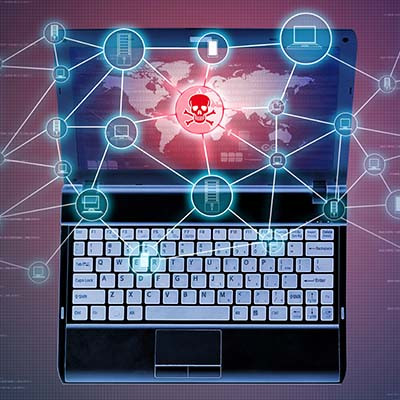Cerberus IT Solutions Blog
Not All Malware is Created Equal
When people talk about network security, it’s just like they are talking about any other subject, the most terrible and devastating of the bunch is all that is spoken about. In the case of malware, there is a lot of information about ransomware going around out there because it is largely the worst type of ransomware there is for any organization. Unfortunately, malware is a vast and largely misunderstood thing. Today, we thought we would briefly go through modern malware so you can identify if you are a victim or not.
First, What Exactly Is Malware?
To properly understand any concept, you need to have a baseline of knowledge about it. If your whole experience with malware is hearing horror stories about ransomware payouts and double-extortion, you may not have a good grasp of what malware actually is. Malware is malicious code that can be deployed in a multitude of ways and can have any number of negative effects on your network and infrastructure. These days, most of these threats are deployed through a process known as phishing, where scammers use manipulative tactics to gain access to an endpoint and then work to deploy malware on the machine (and therefore the computing network it is connected to). Let’s take a look at some types of malware you might have the bad luck to encounter.
Computer Virus
The computer virus is designed to damage a target computer by corrupting data, reformatting a hard drive, or even shutting down the computing system entirely. Viruses are as old as computing itself and can be used to steal data, bog down computers and networks, and in the worst cases create botnets that can work in unison to take down computing constructs.
Worm
The most common type of malware is what is called a worm. The worm is a self-replicating piece of malicious code that, once on a computer, can move to other computers on a network pretty rapidly. Hackers typically use worms to execute other pieces of malicious code as they move fast, and therefore, can cause a lot of damage quickly.
Trojan Horse
The Trojan horse or “Trojan”, typically enters a network or computer as a benign piece of code and then once on the device, it unpacks giving the hackers that wrote the code access to the device. Through a Trojan, the threat actor can siphon data, install more malware, modify files, log user activity and keystrokes, and much, much more. Since the Trojan can’t replicate by itself, it needs to be combined with a worm to cause network-wide damage.
Spyware
Another piece of malware that can be deployed several ways, spyware is designed to track user movement and browser activity. Spyware can monitor website use and track keystrokes, leading to the harvesting of account information, login credentials, financial information, and more. Sometimes spyware is combined with legitimate software making it extremely difficult to detect.
Adware
Adware tends to be more annoying than anything else, but since it is so aggressive, it can be a real nuisance. Not only will it display unwanted advertisements, it can collect data, redirect you to sites, and completely alter your browser settings.
Ransomware
Finally, the king of cybercrime itself: ransomware. Ransomware works by locking down access to files or complete drives, then giving users the ability to get the files and drive access back by paying a ransom. It is, by far, the most devastating kind of malware, and if your business is hit by a ransomware attack, you are definitely dealing with a major problem. Ransomware has been the weapon of choice for 21st century hackers and the amount of different types and access to ransomware has risen exponentially for the past several years; with no sign of slowing.
Protect Your Business
Since these threats will continue, it’s important that you do what you can to protect your business’ information systems against malware attacks. Today, most security strategies have a layered approach to preventing malware. Using firewalls, anti-virus and anti-malware tools, spam filtering, content filtering, software patch management strategies, and around-the-clock monitoring, businesses can typically keep malware at bay from their end.
Today’s business has to be more diligent, however. It needs to have a comprehensive cybersecurity training program in place to ensure that their employees know what to look for and how to approach phishing and other avenues of attack. Luckily, the IT professionals at Cerberus IT Solutions can help your business with both the tools and resources needed to quell attacks against your network and the strategies and platforms necessary to ensure your staff is properly trained to help you protect your business’ IT infrastructure and network.
This part of your business’ computing couldn’t be more important. If you would like more information about how we can assist you in keeping malware off your business’ crucial IT systems, give us a call today at (361) 333-1123.


Comments